Targeting abnormal neural circuits in mood and anxiety disorders: from the laboratory to the clinic
- PMID: 17726478
- PMCID: PMC2444035
- DOI: 10.1038/nn1944
Targeting abnormal neural circuits in mood and anxiety disorders: from the laboratory to the clinic
Abstract
Recent decades have witnessed tremendous advances in the neuroscience of emotion, learning and memory, and in animal models for understanding depression and anxiety. This review focuses on new rationally designed psychiatric treatments derived from preclinical human and animal studies. Nonpharmacological treatments that affect disrupted emotion circuits include vagal nerve stimulation, rapid transcranial magnetic stimulation and deep brain stimulation, all borrowed from neurological interventions that attempt to target known pathological foci. Other approaches include drugs that are given in relation to specific learning events to enhance or disrupt endogenous emotional learning processes. Imaging data suggest that common regions of brain activation are targeted with pharmacological and somatic treatments as well as with the emotional learning in psychotherapy. Although many of these approaches are experimental, the rapidly developing understanding of emotional circuit regulation is likely to provide exciting and powerful future treatments for debilitating mood and anxiety disorders.
Figures
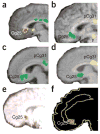
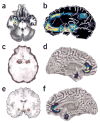
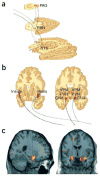
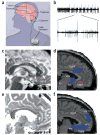
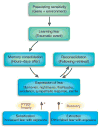
Similar articles
-
Somatic treatments for mood disorders.Neuropsychopharmacology. 2012 Jan;37(1):102-16. doi: 10.1038/npp.2011.225. Epub 2011 Oct 5. Neuropsychopharmacology. 2012. PMID: 21976043 Free PMC article. Review.
-
Neuroinflammation mechanisms of neuromodulation therapies for anxiety and depression.Transl Psychiatry. 2023 Jan 9;13(1):5. doi: 10.1038/s41398-022-02297-y. Transl Psychiatry. 2023. PMID: 36624089 Free PMC article. Review.
-
[Interventional psychiatric procedures and novel substances for the treatment of affective disorders: An overview and outlook].Ther Umsch. 2025 Apr;82(2):57-61. doi: 10.23785/TU.2025.02.005. Ther Umsch. 2025. PMID: 40336446 Review. German.
-
Mood disorders in elderly population: neurostimulative treatment possibilities.Recent Pat CNS Drug Discov. 2009 Jun;4(2):149-59. doi: 10.2174/157488909788453013. Recent Pat CNS Drug Discov. 2009. PMID: 19519563 Review.
-
Deep brain stimulation: a new treatment in mood and anxiety disorders.CNS Neurol Disord Drug Targets. 2014;13(6):961-71. doi: 10.2174/1871527313666140612122929. CNS Neurol Disord Drug Targets. 2014. PMID: 24923335 Review.
Cited by
-
[Transcranial and invasive brain stimulation for depression].Nervenarzt. 2012 Aug;83(8):1006-12. doi: 10.1007/s00115-012-3573-y. Nervenarzt. 2012. PMID: 22843027 German.
-
AMPAkines potentiate the corticostriatal pathway to reduce acute and chronic pain.Mol Brain. 2021 Mar 2;14(1):45. doi: 10.1186/s13041-021-00757-y. Mol Brain. 2021. PMID: 33653395 Free PMC article.
-
Biomarkers and the future of treatment for depression.Cerebrum. 2012 May;2012:6. Epub 2012 May 30. Cerebrum. 2012. PMID: 23447792 Free PMC article.
-
Regional gray matter volume mediates the relationship between family socioeconomic status and depression-related trait in a young healthy sample.Cogn Affect Behav Neurosci. 2016 Feb;16(1):51-62. doi: 10.3758/s13415-015-0371-6. Cogn Affect Behav Neurosci. 2016. PMID: 26243039
-
Nociception, Pain, Negative Moods, and Behavior Selection.Neuron. 2015 Aug 5;87(3):474-91. doi: 10.1016/j.neuron.2015.06.005. Neuron. 2015. PMID: 26247858 Free PMC article. Review.
References
-
- Keller MB, et al. Time to recovery, chronicity, and levels of psychopathology in major depression. A 5-year prospective follow-up of 431 subjects. Arch Gen Psychiatry. 1992;49:809–816. - PubMed
-
- Greenberg P, et al. The economic burden of anxiety disorders in the 1990s. J Clin Psychiatry. 1999;60:427–435. - PubMed
-
- Gorman JM. Comorbid depression and anxiety spectrum disorders. Depress Anxiety. 1996;4:160–168. - PubMed
-
- Ressler KJ, Nemeroff CB. Role of serotonergic and noradrenergic systems in the pathophysiology of depression and anxiety disorders. Depress Anxiety. 2000;12:2–19. - PubMed
Publication types
MeSH terms
Grants and funding
LinkOut - more resources
Full Text Sources
Other Literature Sources
Medical

